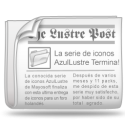 Music Metadata: Coding Your Recordings for Maximum Royalties
Music Metadata: Coding Your Recordings for Maximum Royalties
 by Peter Spellman,
by Peter Spellman, ![]() If you plan on releasing your music on the Net, through satellite radio, or via music services like Muzak, you'll need to understand the following.
If you plan on releasing your music on the Net, through satellite radio, or via music services like Muzak, you'll need to understand the following.
A lot of information on a music CD isn't music. Some of it are codes that help trace the uses and sales of your music online. Without them there is a good chance you'll miss out on royalties owed you. The four important codes you'll need are:
1. Universal Product Code (UPC): This is also known as a "bar code" and it is attached to nearly every packaged product available in retail stores. Each product has a unique 12-digit number, encoded in the bars, which are scanned upon purchase and allow for the tracking of inventory and sales.
Most music chains no longer carry non-UPC products (because they can't scan them at the cash register),
and major label A&R departments conduct much of their market research on unsigned bands and indie labels by checking Soundscan sales on the retail level.
Nielsen Soundscan collects UPC sales data from over 10,000 outlets in the U.S. and Canada to compile its weekly list of music sales, which are published online (www.soundscan.com). These reports are an important ingredient in the weekly Billboard charts.
 You can get a barcode either through the Uniform Code Council (www.uccouncil.org) for about $500, or from any number of music services (e.g., indie retailer CD Baby or CD manufacturer Oasis) for a lot less money. Of course, getting a barcode is one thing, subscribing to Soundscan reports is another, and costs are high (best to find a buddy who works at a record store that subscribes and view the report that way).
You can get a barcode either through the Uniform Code Council (www.uccouncil.org) for about $500, or from any number of music services (e.g., indie retailer CD Baby or CD manufacturer Oasis) for a lot less money. Of course, getting a barcode is one thing, subscribing to Soundscan reports is another, and costs are high (best to find a buddy who works at a record store that subscribes and view the report that way).
2. ISRC (International Standard Recording Code): The ISRC is a relatively new international identification system for sound recordings and music DVDs. The 12-character alphanumeric ISRC functions as a digital "fingerprint" for each track. Each ISRC is a unique and permanent identifier for a specific recording, to help identify recordings for royalty payments. It is assigned per track, not per CD. Unlike UPCs, the ISRC is tied to the track, not the carrier of the track.
No one knows which code will end up being the universal identifier for digital music tracks, but the ISRC is a good start (even though the RIAA runs the program). It's smart to identify your recordings this way. They are embedded in the metadata of your CD during the mastering phase. Make sure you let your CD manufacturer know these codes are in your master. If your CD manufacturer doesn't know about ISRCs, find one that does.
ISRC codes can be obtained by both large and small music companies, even single artist labels. The full application process can be performed online and via email. Those based in the U.S. can download forms and get further information at: www.riaa.com . If you are based outside the U.S., visit http://ifpi.org/isrc for the information you need.
3. CD Text: "CD Text" is information about the release that can be encoded as a separate file on an audio CD. It stores information like the album and song titles. When playing back an audio CD containing CD Text information on a CD Text-enabled player (usually an LCD screen), the listener will be able to read this information on the display panel. It's displayed only on CD or DVD players, not on the desktop of most computers. One fast-growing space for these displays is satellite-radio-enabled cars.
Since its part of the Red Book standard, CD Text info can be entered onto a CD master quite easily using the "table of contents" in the appropriate CD subchannel. Like the ISRC, this happens during the mastering phase of your recording. Be sure to plan ahead for this.
4. CDDB (CD Data Base): CDDB is a database for software applications to look up CD information over the Internet. You've probably noticed it when ever you've imported a CD into your computer's music library. Most of what you see is the work of one company, Gracenote, which has been entering the identity of every CD track for many years now.
It was designed around the task of identifying entire CDs, not merely single tracks. The identification process involves creating a "discid," a sort of "fingerprint" of a CD created by performing calculations on the track duration information stored in the table-of-contents of the CD.
There are alternatives to Gracenotes's proprietary CDDB. These include FreeDB, MusicBrainz and All Media Guide's AMG LASSO. Gracenote will eventually pick up on your CD, but it's not a bad idea to send the information in yourself. To submit to Gracenote's database go to: http://gracenote.com and read the FAQs under "Company Info."
Keep good records of all this information to ensure accurate and comprehensive monitoring of your music's uses in the digital age.
![]() Provided by the MusicDish Network. Copyright © MusicDish LLC 2006 - Republished with Permission
Provided by the MusicDish Network. Copyright © MusicDish LLC 2006 - Republished with Permission

Comments